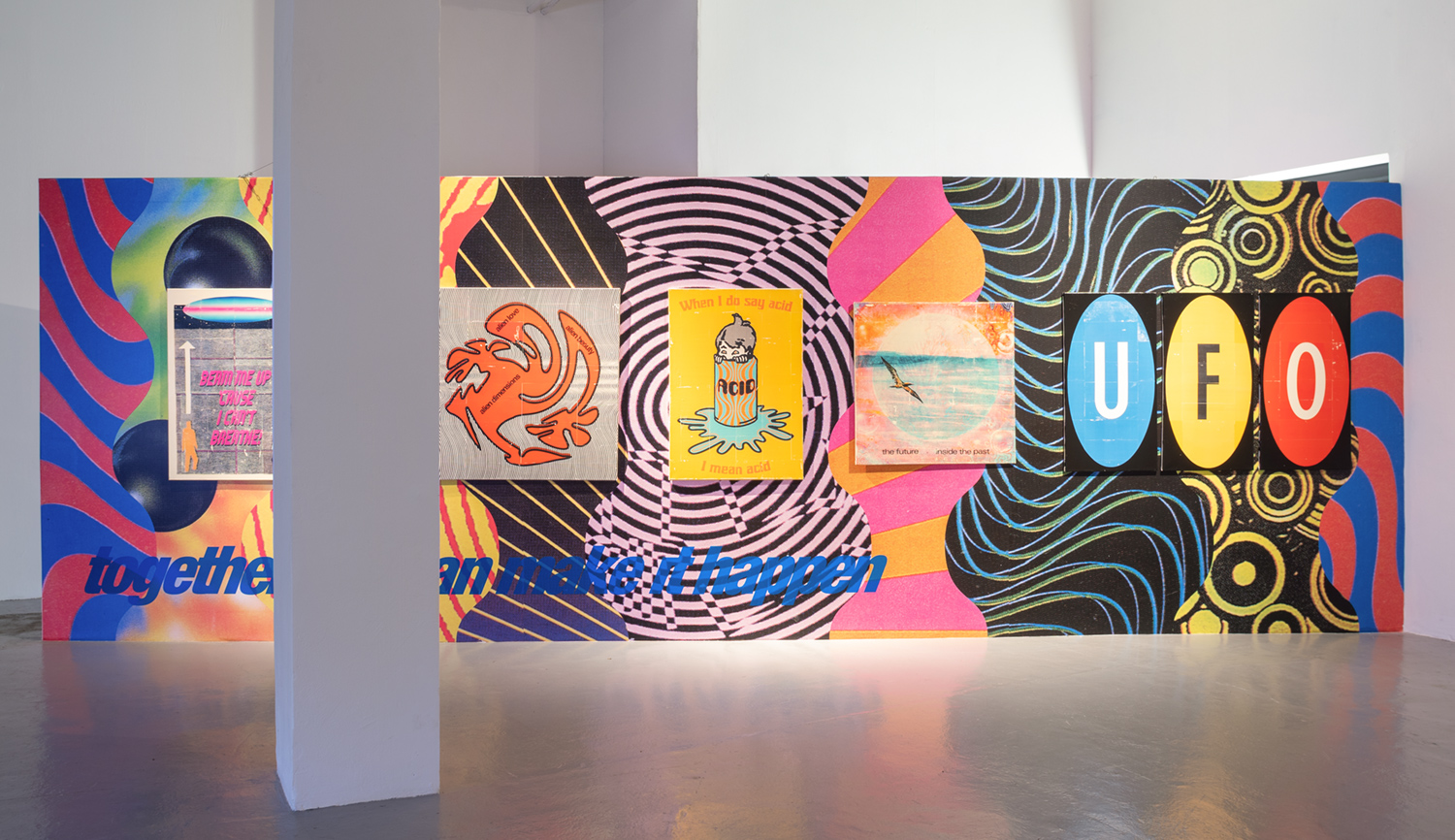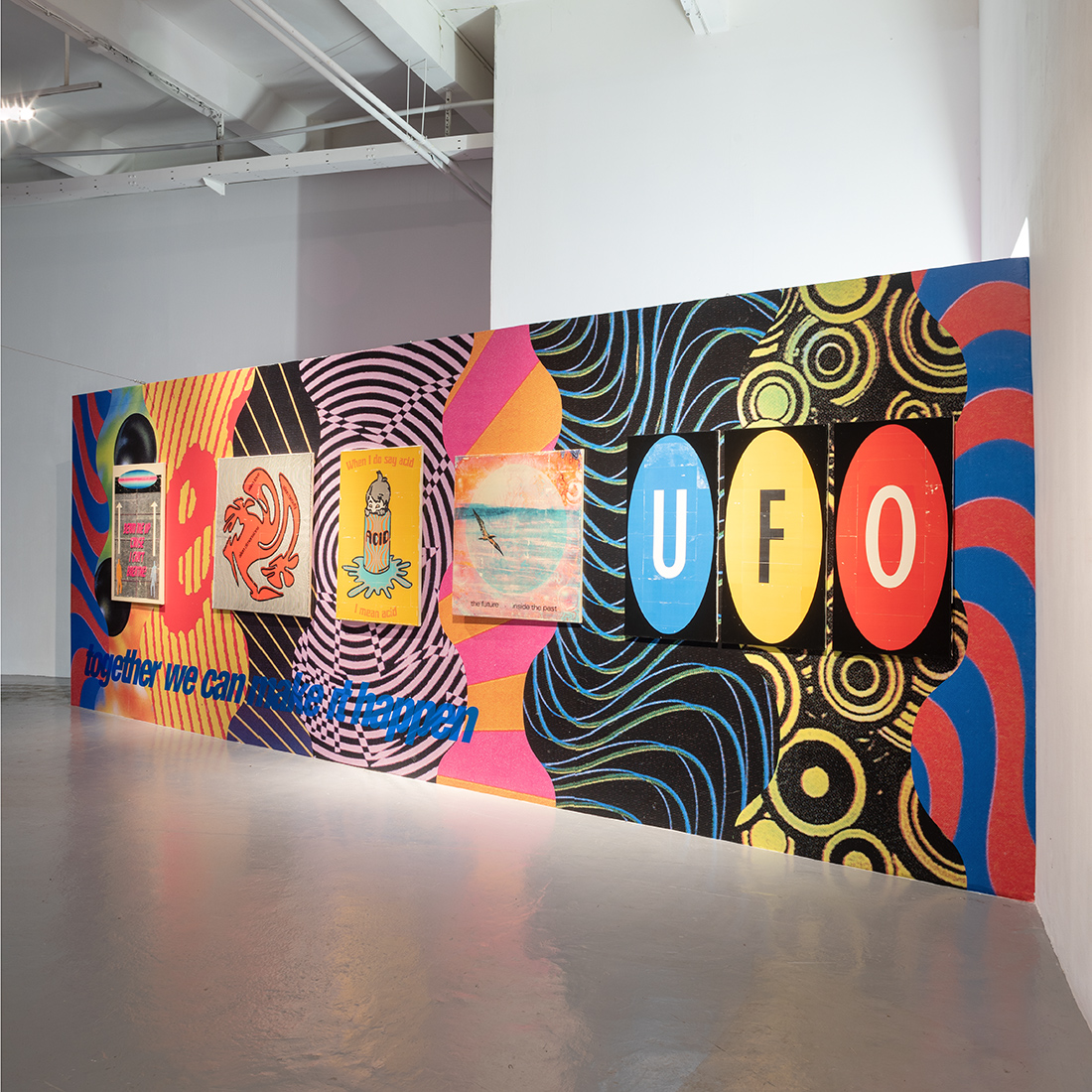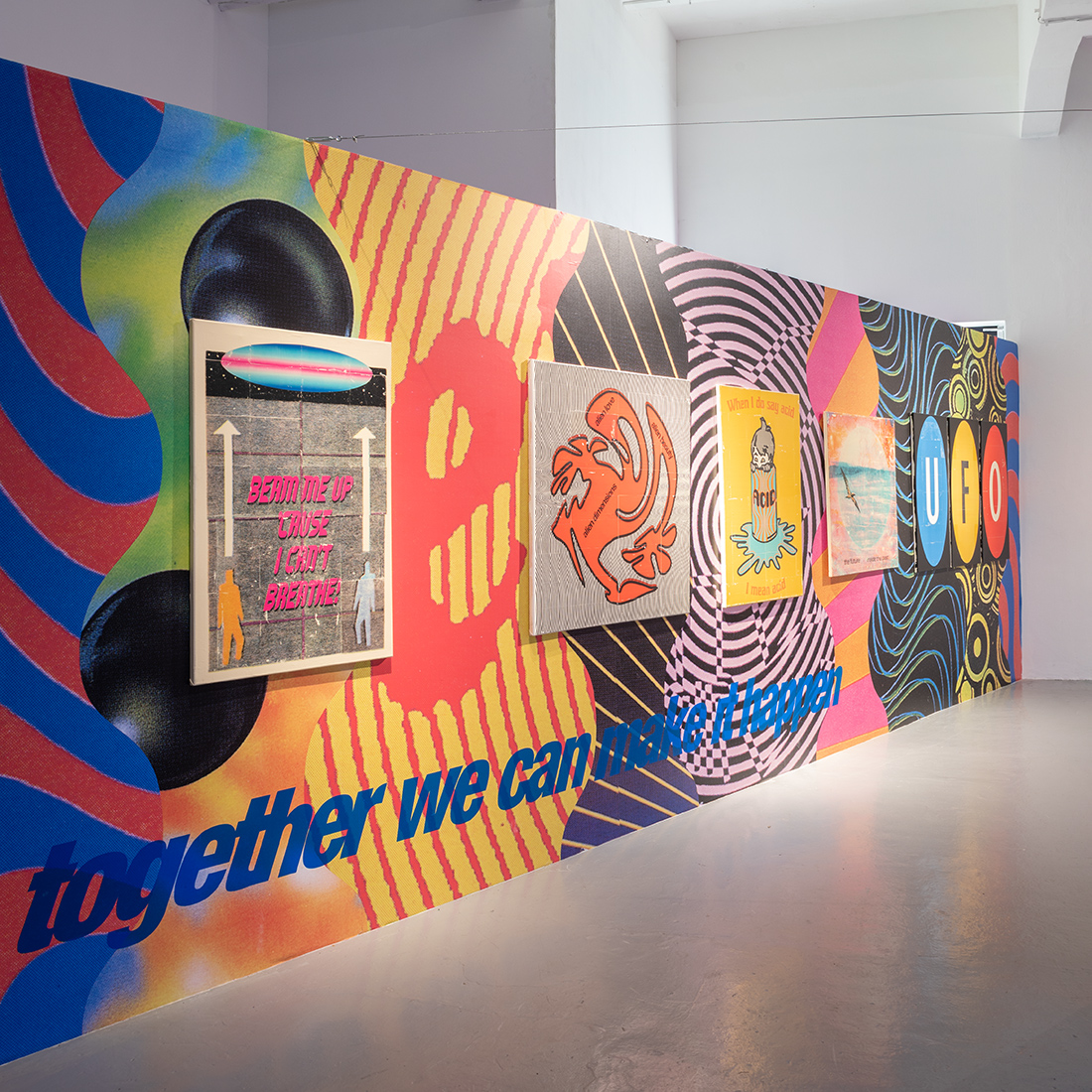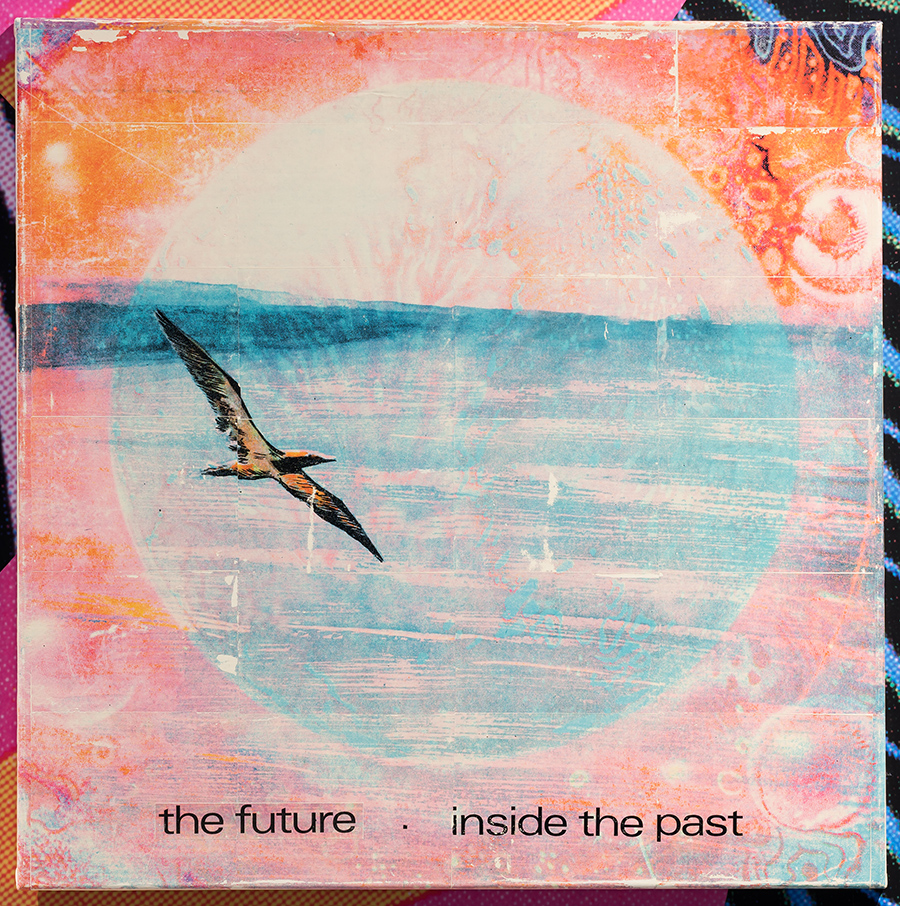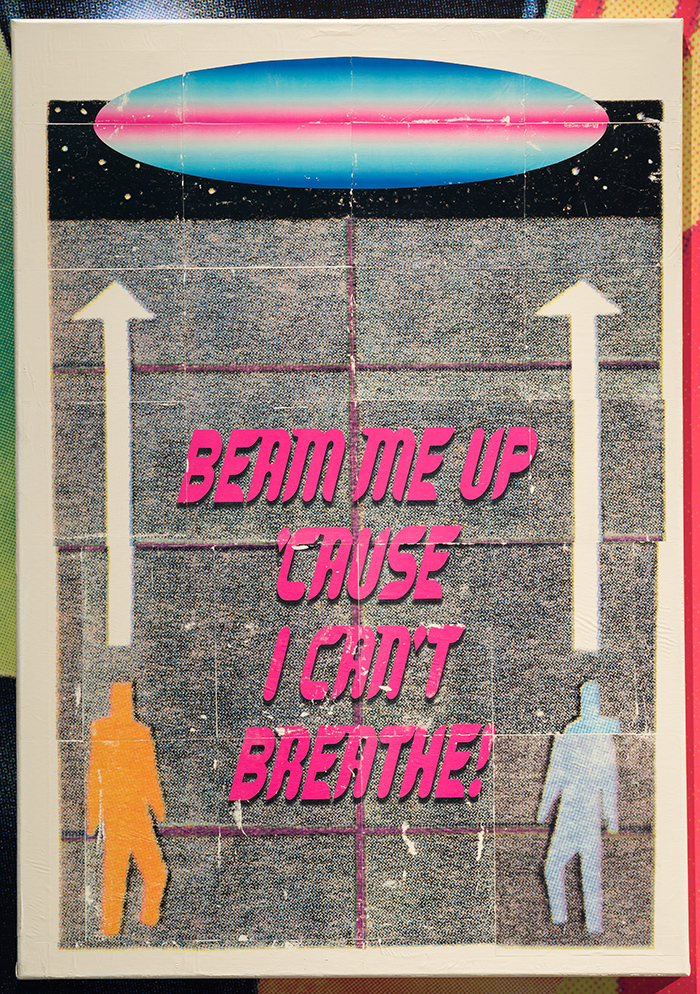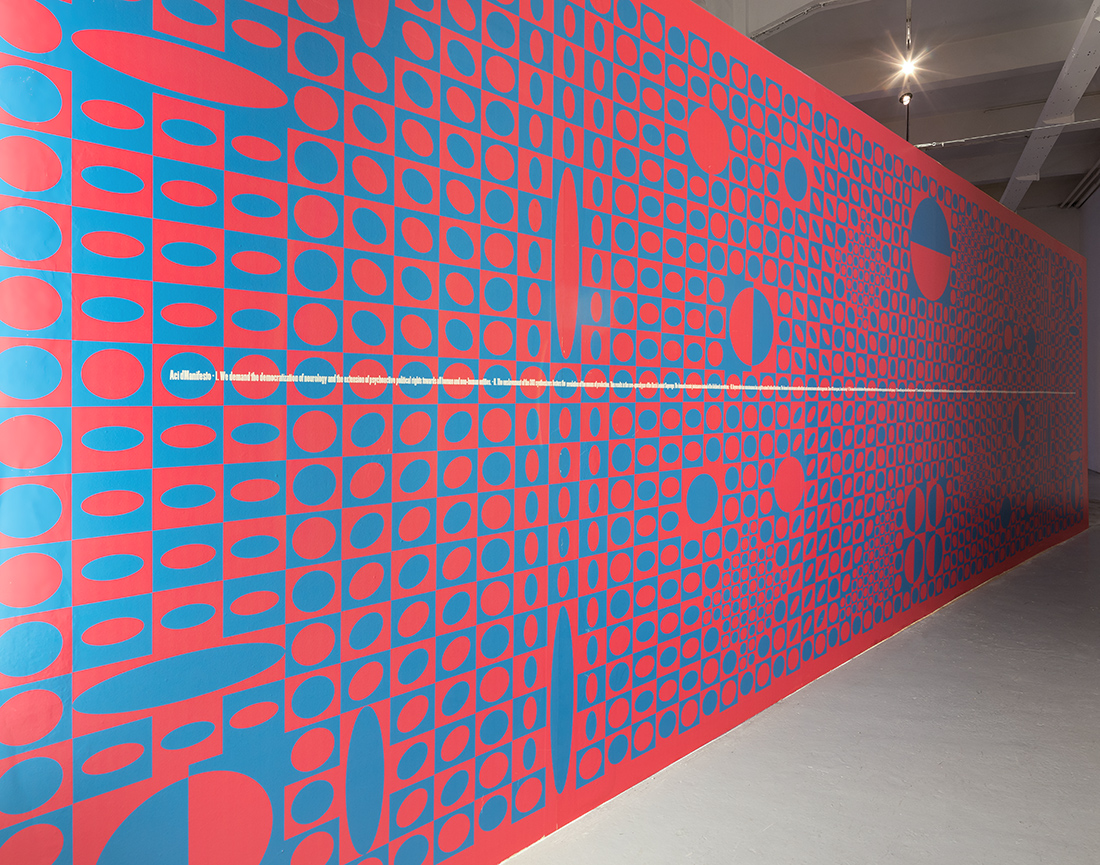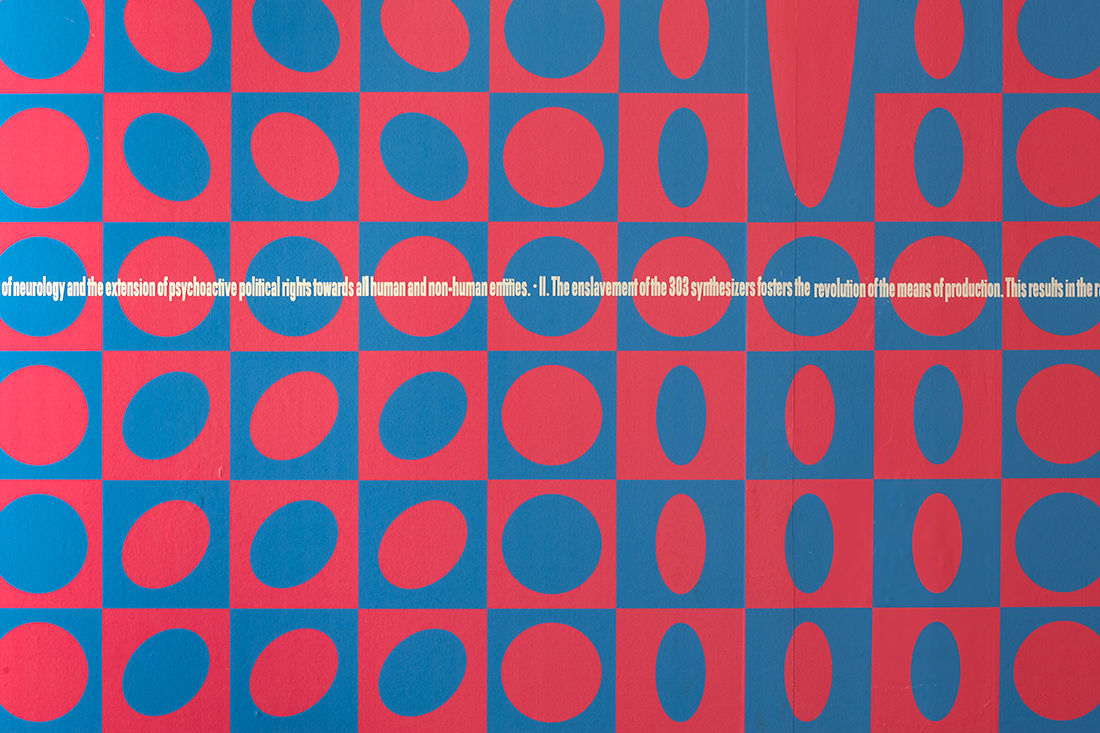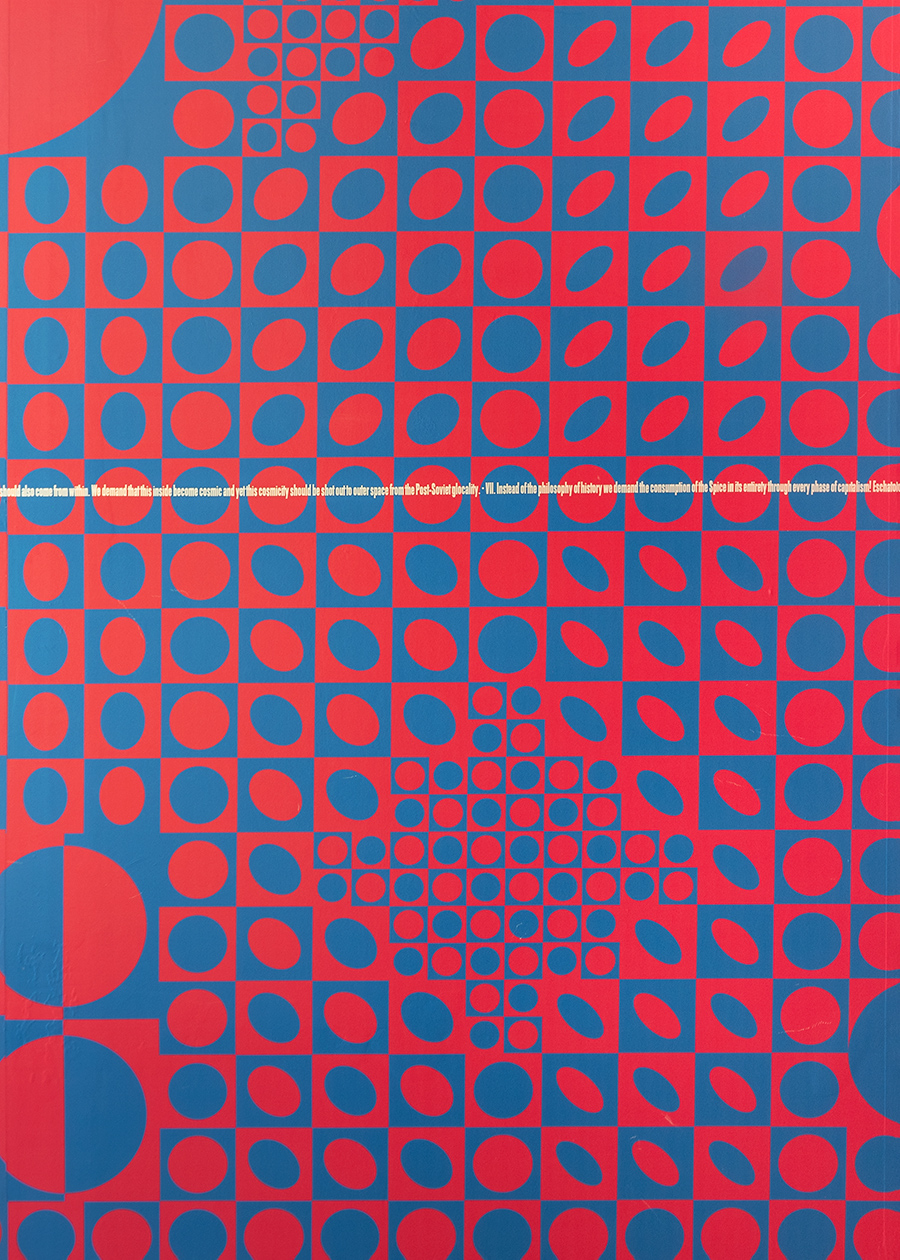MARK FRIDVALSZKI
Across the entire wall stretches the text of the ACID Manifesto by Fridvalszki’s close collaborators Zsolt Miklósvölgyi and Mário Z. Nemes (art collective Technologie und das Unheimliche), who in a way that is both poetic and uncompromising calls for making the psychedelic experience accessible to all. ’’Psychonauten aller Länder, vereinigt euch!’’ Psychonauts of the world, unite!
In his richly layered work, Fridvalszki has long explored the subject of historical futurism, utopias and echoes of modernism, focusing mainly on the blending of motifs from pop culture, certain subcultures and counter‐cultural alternatives—including their relationship to drugs. These motifs are then accompanied by a highly speculative element focused on extraterrestrial life and cosmic dimensions.
Fridvalszki uses the method of media archaeology, where he appropriates and recycles forms of modernist art, advertising and alternative culture, drawing primarily from the region of Central and Eastern Europe. The graphic motifs on the inside of the long gallery wall are detailed scans from acid‐house flyers and posters from the ’80s and ’90s (taken mainly from the album High Flyers from 1995) and the paintings on canvas created using the technique of acrylic transfer are based on the pop‐art tradition found in various printed materials (flyers, posters, fanzines, etc.) from the era of ’90s acid house. These publications adopted various commercial and corporate logos and symbols, turned them inside out and exaggerated or ridiculed their authority. The distinctive ’e’ we see on the wallpaper refers to ecstasy—a drug that, from the artist’s point of view, gave rise to many utopian moments in the atomized, neoliberal Thatcher‐era England of the late ’80s. It is these subversive aspects of subcultures or speculative imagination that are central to Fridvalszki: ’’Acid, UFO and Jazz are crucial metaphors for me. These vectors want to break out of our late post‐modern present and express the desire to be able to envision a system beyond the actual capitalist hegemony.’’ In fact, this ’’being able to envision’’ may nowadays in a way literally demand the testing and construction of a new, expanded consciousness that would allow us to step beyond not only our own subjectivity, but also beyond the disarming feeling of self‐sustaining survival at the end of history. – Tereza Jindrová
